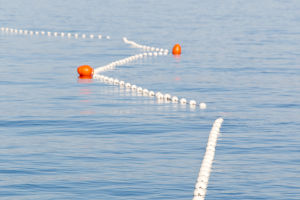Sea anemones are fascinating creatures that belong to the group of cnidarians and are carnivorous. These creatures live in water, and their structure is very simple, without any central information processing mechanism, which means that they do not even have the lowest brain foundation.
Sea anemones are widely distributed in all oceans, and they can be found from intertidal to depths of more than 10,000 meters. Most sea anemones live in shallow seas and puddles or crevices on rocky shores, and only a few live in oceanic abysses, with a maximum habitat depth of 10,210 meters.
Due to the fact that sea anemones usually live in shallow waters, few animals prey on them. However, when they encounter a predator, they quickly burrow into the sand. These animals have their unique locomotion tricks, where their bodies and tentacles stretch and contract together, and sometimes they do somersaults.
The movement of sea anemones is accomplished by stretching and contracting their well-developed muscles. Their slow movement makes them easy to mistake for "flowers."
Even though sea anemones may look like flowers, they are predators. Their tentacles are the tools used to hunt for food, and they have dozens of them, which contain a special kind of stinging cell that releases toxins. The toxin composition of sea anemones is complex, and it varies from species to species.
While most sea anemones pose little threat to humans, some species are poisonous. If a person touches a poisonous sea anemone and gets stung, their skin may become red, swollen, and stinging, and blisters may occur.
In severe cases, it may be difficult to breathe, and the person may experience angina pectoris or even life-threatening conditions. It is important to note that poisonous sea anemones should never be eaten.
Sea anemones do not attack humans, and their soft tentacles are constantly swaying in the seawater. When small fish, shrimps, shellfish, and zooplankton swim over, the sea anemone's barbed and toxin-containing tentacles quickly shrink to capture the prey.
Apart from being predators in the food chain, sea anemones also play an essential role in marine ecosystems. They provide a habitat for other marine organisms and can filter organic matter and microorganisms in seawater to purify it.
Moreover, sea anemones have a certain application value in the medical field. Sea anemone toxins have a strong bactericidal effect, and certain types of anemone toxins can be used to treat diseases such as neurological diseases and cancer.
In scientific research, sea anemones have become one of the important research objects. Their simple structure and biological characteristics make it easier for scientists to study the physiological and behavioral mechanisms of their nervous system, biological clock, light sensing, and feeding.
Unfortunately, the survival of sea anemones is threatened due to human activities and the deterioration of the marine environment. Ocean pollution, climate change, and other factors will affect the growth and reproduction of sea anemones. Therefore, the protection of marine ecosystems and biodiversity has become one of the significant challenges that human beings must face.
It is important to understand the role of sea anemones in marine ecosystems and to ensure their continued survival for the health of our oceans and the many species that depend on them. By taking steps to protect sea anemones and other marine organisms, we can help preserve the incredible biodiversity of our planet's oceans.


